#sperone editore
Text

Giovanni Anselmo, (1971), Leggere, (offset lithograph on paper), Editarte / Sperone Editore, Torino, 1972 [Studio Bruno Tonini, Gussago (BS). © Giovanni Anselmo]
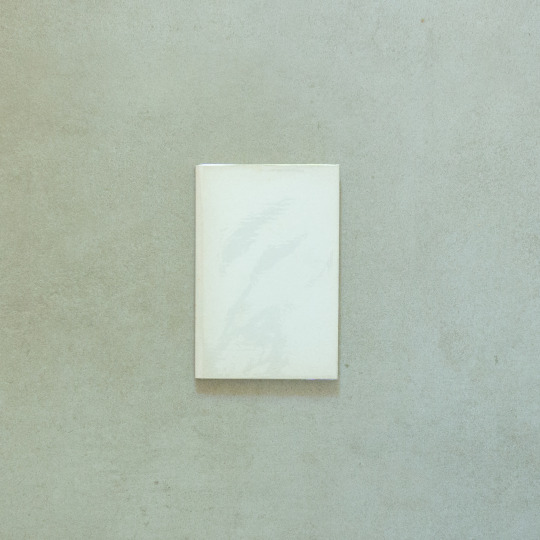
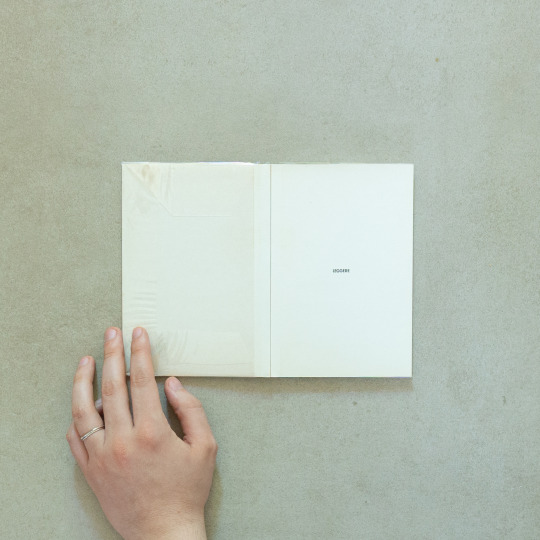


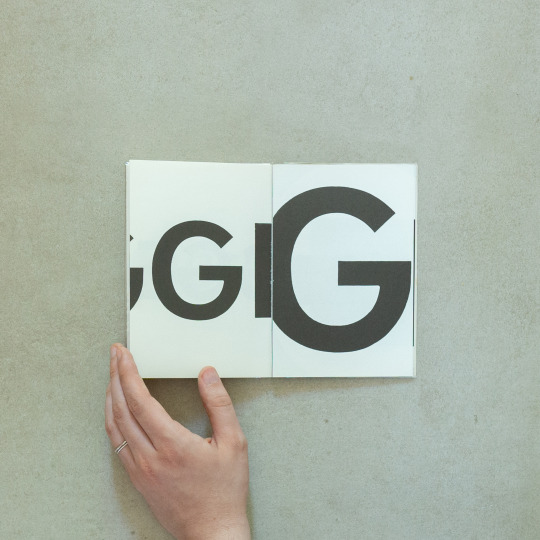

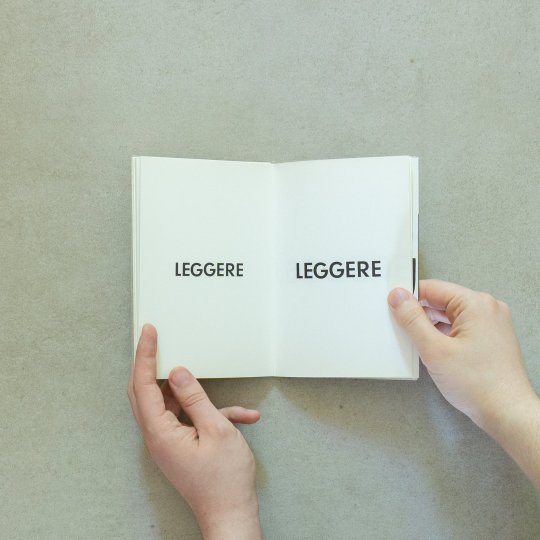
#graphic design#typography#art#visual writing#book#cover#book cover#giovanni anselmo#editarte#sperone editore#1970s
19 notes
·
View notes
Text
DRAWING IS A VERB
Taney Roniger
March 4 – April 8, 2023
Opening Reception:
Saturday, March 4, 5-8pm
Artist talk:
Friday, April 7, 6pm
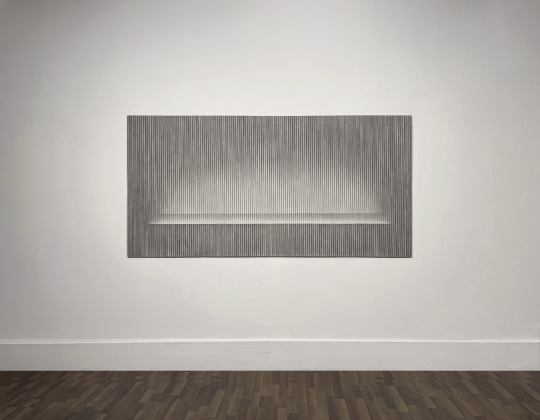
Studio 34 is pleased to present Drawing is a Verb, an exhibition of large-scale drawings by Taney Roniger. Made over the last two years, the works explore not what drawings can mean or signify but rather what they can do to the body of the viewer.
Inspired by a book by Sarah Robinson titled Architecture is a Verb, Roniger began the series by thinking about how conditions of light can alter moods and states of consciousness. Soon she began thinking about spatial conditions as well, coming to focus on spaces that evoke our earliest ancestry as a species. Using charcoal because of the unique way it interacts with her paper’s surface, she began making drawings meant to evoke these earliest conditions. In the resulting series, settings such as the ocean, the horizon, and the forest become recurring motifs, appearing not in their literal form but by subtle suggestion. With their quietly rhythmic and luminous presence, the drawings communicate a deep sense of home.
For Roniger, the experience of the viewer is primary. “So much art these days is about the identity of the artist,” she says. “My work, by contrast, is all about the viewer. I want to make things that eclipse me altogether, things that speak of – and to – the body experiencing them.” In conceiving of her work as speaking to the body, Roniger’s ultimate aim is to create a physical experience of our continuity with the natural world. “If I do my job right,” she says, “even the viewer will be eclipsed. Ideally, all that will be left will be a deeply felt sense of belonging to the world.”
In conjunction with the exhibition, the gallery will host a conversation between Roniger and artist, writer, and curator Daniel Hill. The event will take place on Friday, April 7th at 6:00pm.
______
Taney Roniger is an artist and writer based in New York. A painter for many years, she has recently turned to drawing, finding it to be the most direct visual expression of the intelligence of the human body. Her work has been shown in a number of venues here and abroad, including: Robert Henry Contemporary, Lesley Heller Workspace, Sperone Westwater, The Islip Art Museum, and StandPipe Gallery in New York; the Contemporary Arts Center and The Front in New Orleans; and the Pera Museum in Istanbul, Turkey. Her awards and honors in the visual arts include three Yaddo fellowships, a grant from the Pollock-Krasner Foundation, and a traveling fellowship from the Stacey Sussman Cavrell Memorial Foundation. Since 2012, she has been a contributing writer at The Brooklyn Rail, for which she served as Guest Editor in December 2017. Her writing has also appeared in Interalia, Hyperallergic, Whitehot Magazine, Big Red & Shiny, Transverse, and On-Verge. In 2016 she was a finalist for the Creative Capital Arts Writers Grant in short-form non-fiction. Over the last ten years she has organized numerous arts-related symposia, among them Thingly Affinities: Rethinking Aesthetic Form for a Posthumanist Future, Beyond Kandinsky: Revisiting the Spiritual in Art, Strange Attractors: Art, Science, and the Question of Convergence, and Stop the Interrogation, a critical look at nonsense language in the visual arts. She holds an MFA from Yale University and a BFA from the School of Visual Arts, where she teaches in the Fine Arts Department and Honors Program.
STUDIO 34 - 34-01 38th Ave Long Island City NY 11101
Hours Friday 11 – 6 and by appointmentFor appointment contact Eliza Barnes at [email protected](607) 435-6908.LOCATION Studio 34 is on the fourth floor of the Pierce-Arrow building in Long Island City, NY. Any of the following trains will get you there:
- R/M trains to 36th St stop, exit at 34th St stairs and cross Northern Blvd. Pierce-Arrow building behind 7-11/Shell.-
N/W trains to 39th Ave stop, walk one block to Northern Blvd, go left to 34th St.-
E train to Queensboro Plaza stop, exit at 41st Ave stairs and walk east four blocks.-
7 train to Queensboro Plaza stop, walk south to Northern Blvd, go east four blocks.
0 notes
Text
Grottammare Alta, un viaggio tra terra e mare

Grottammare Alta, un viaggio tra terra e mare
Tra le località più fotografate delle Marche c'è il borgo di Grottammare Alta che regala uno splendido panorama sul mare dagli intensi contrasti cromatici tra il blu dell'Adriatico e il bruno del cotto che ne compone il borgo.La posizione cruciale per il controllo dei confini la rese protagonista di una lunga serie di attacchi, ingerenze e alcune frane che ne cambiarono lentamente l'aspetto. Lo sperone roccioso su cui si aggrappa era, in passato, molto più vicino al mare e gli abati di Farfa, che nelle vicinanze avevano eretto la corte di San Martino al Tesino, lo scelsero per farne una fortificazione di guardia. Gli abati, protetti da papi e da bolle imperiali per tutto il XII secolo, furono costretti a cedere la loro Grottammare a Fermo nei primi anni del Duecento anche se i fermani riuscirono ad arginare con fatica i tanti nemici che aspiravano alla sua conquista.Un annus orribilis fu il 1451 quando una grossa frana ne distrusse le mura e buona parte delle abitazioni lasciando la popolazione esposta alle numerose scorrerie di pirati che si muovevano nell'Adriatico fino alla conquista degli ottomani nel 1525. Quando Fermo riuscì a recuperare Grottammare iniziò la ricostruzione delle mura, ma la crescita della città fu sostenuta soprattutto dall'intenso impegno di papa Sisto V che qui nacque nel 1521 con il nome di Felice Peretti e promosse opere assistenziali e culturali, nuovi scambi commerciali, la costruzione di palazzi e chiese di grande valore artistico.Alla fine del Settecento una nuova frana cambiò l'aspetto di Grottammare, questa volta non toccò alle mura che rimasero intatte, ma al porto che venne completamente interrato modellando una nuova zona pianeggiante dove si sviluppò un elegante borgo sulla costa frequentato fin dall'Ottocento da raffinati visitatori, alcuni anche prestigiosi come Franz Liszt, che hanno fatto nascere preziose ville liberty attorniate da ameni giardini con le palme, fino a divenire una della località balneari più frequentate dai turisti di oggi.Il nostro tour vi propone un giro partendo da Piazza Peretti con la famosa loggia panoramica che è ormai un must di tutti i social. Sono chiamate anche "Logge dell'Arancio" perché la tradizione racconta di un albero di arancio piantato al centro della piazza proprio da Sisto V. In realtà la coltivazione degli agrumi in questo fazzoletto di terra non rappresentava un'eccezione, ma una vera regola di lunga tradizione.
Per visualizzare a tutto schermo fare doppio click all'interno del Virtual Tour.
Dalle logge si accede al Museo il Tarpato che raccoglie le opere di Giacomo Pomili detto il Tarpato (Grottammare 1925 - 1997), un pittore autodidatta che potrebbe essere ascritto tra gli artisti naif e folk, pazzi e instabili, ma che ha realizzato una sua visione del mondo svincolato da qualsiasi logica creando oniriche visioni e pezzi di sogni dai colori potenti. Subito relegato tra le fila degli artisti locali che ritraggono il solo paese di provincia, Pomili è oggi sempre più apprezzato dai critici e dal pubblico per l'immediatezza con cui ha saputo leggere e tradurre in immagini l'anima della sua terra.

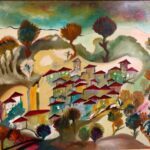
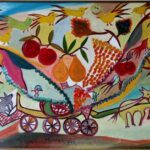
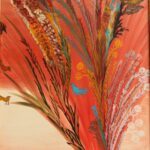



Precedente
Successivo
Questo bel loggiato che guarda il mare sorregge anche il neoclassico Teatro dell'Arancio, ascritto tra i "Teatri Storici delle Marche" e progettato da Pietro Maggi (Bruzella, Canton Ticino, 1756 – Colonnella, Teramo, 1816). Fu costruito completamente in legno con tre ordini di palchi rifiniti con dorature. Abbandoni e rifacimenti ne cambiarono l'aspetto fino alla versione attuale frutto del restauro del 2003 quando l'ingresso dalle logge, ancora visibile perché murato, fu chiuso a favore di una scalinata a fianco della torre civica. Al centro della facciata è posta la statua di bronzo di Sisto V realizzata da Stefano Interlenghi nel 1794. Nella piazza campeggia anche al chiesa di San Giovanni Battista che custodisce il Museo Sistino con i preziosi oggetti che papa Sisto V regalò alla sua città esposti insieme ai dipinti di Vittore Crivelli e Vincenzo Pagani.Spostandosi verso nord, al centro di una balconata sul mare, si trova la semplice, ma austera chiesa di Santa Lucia voluta da Sisto V nel luogo dove era la sua casa. Fu progettata da Domenico Fontana (Melide, Svizzera 1543 – Napoli, 1607), ma il papa non riuscì a vederne il completamento per il sopraggiungere della morte il 27 agosto del 1590. A decidere la continuazione dei lavori fu sua sorella Camilla Peretti come narra la scritta sull'architrave del portone di ingresso "Dive Lucie Camilla Pirieeta Dicavii". Fu terminata nel 1595 e papa Clemente VIII le conferì il titolo di Collegiata l'anno seguente.Ritornando alla piazza e scendendo di pochi metri in direzione sud, si arriva al Largo Porta Maggiore con uno sguardo sull'infinito del mare. Qui si trovano in mostra le rovine della vecchia porta probabilmente costruita nel 1529, quando tutte le mura furono rinforzate, e poi abbattuta nel corso dell'Ottocento per aprire una strada più comoda per raggiungere la piazza.Dal Largo si arriva al simbolo di Grottammare: il Torrione della Battaglia. Tutto a mattoni con pianta circolare ha la sommità percorsa da beccatelli piombanti abbelliti da sinuosi merli ricurvi cha lasciano aperto il belvedere sul mare. Questa torre è frutto di quell'opera di rafforzamento difensivo avvenuto nel Cinquecento dopo il saccheggio dei pirati provenienti da Dulcigno, città del Montenegro, conosciuta all'epoca come un covo di pirati turchi.Se Sisto V è stato figlio illustre di Grottammare, nel Novecento la città ha dato i natali anche al grande artista Pericle Fazzini (Grottammare 1913 – Roma 1987) autore della Resurrezione esposta nella Sala Nervi in Vaticano e di opere che sono custodite in tutti i più rinomati musei. A Grottammare ha lasciato molte delle sue creazioni oggi disposte lungo un percorso cittadino che parte dal mare per giungere al borgo alto.BibliografiaDragosei, Il Papa & l’Architetto, Gangemi Editore, 2015.Addazi, Grottammare: popolo, territorio, arte, storia, 1998.Appella, Pericle Fazzini, Libreria dello Stato, Istituto Poligrafico e Zecca dello Stato, Roma 1994.Marini, Storia della terra di Montottone nelle Marche pel Dottore Achille Marini, 1863.Linkhttps://www.comune.grottammare.ap.it/
https://www.comune.grottammare.ap.it/servizi/musei-comunali/
https://www.papasistov.it/it/
http://museisistini.it/
Il Tarpato | Facebook
Read the full article
#abatidiFarfa#CamillaPeretti#chiesadiSantaLucia#Dulcigno#FelicePeretti#GiacomoPomili#MuseoilTarpato#MuseoSistino#PericleFazzini#PietroMaggi#SistoV#Teatrodell'Arancio#TorrionedellaBattaglia#VincenzoPagani#VittoreCrivelli
0 notes
Photo
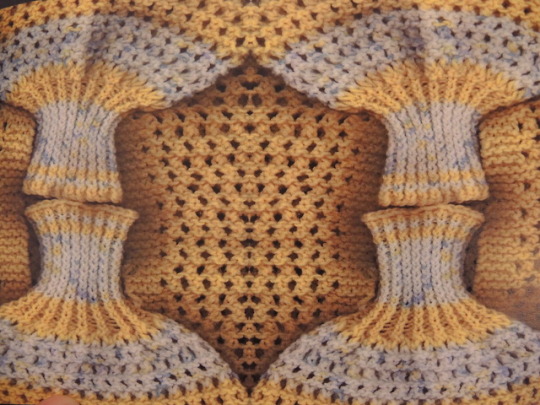
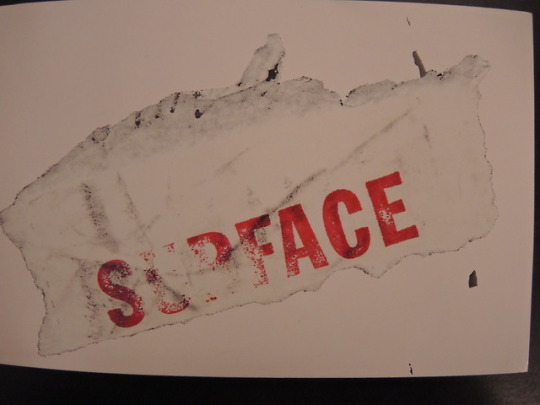
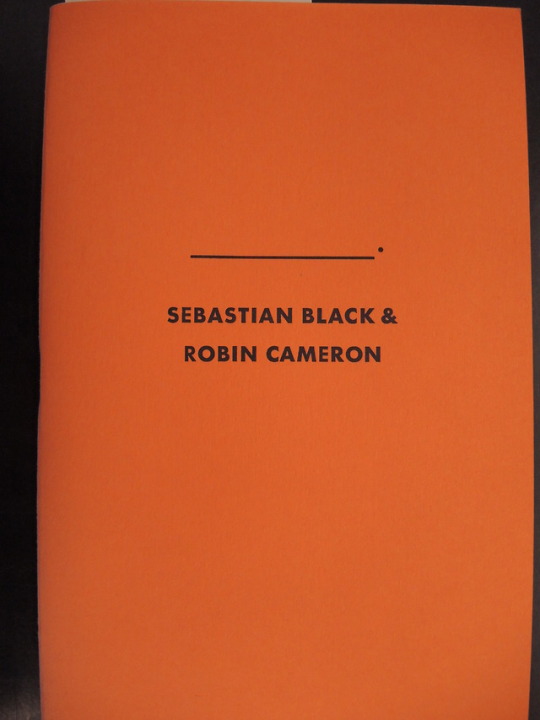
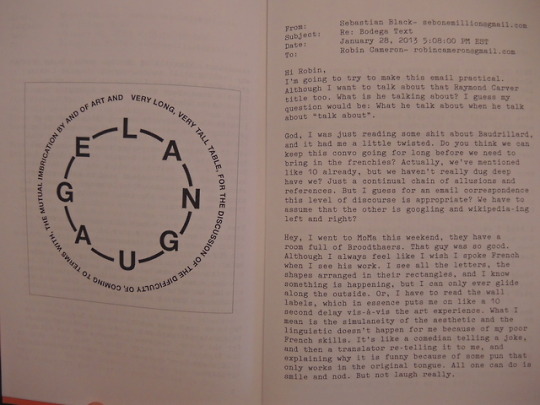




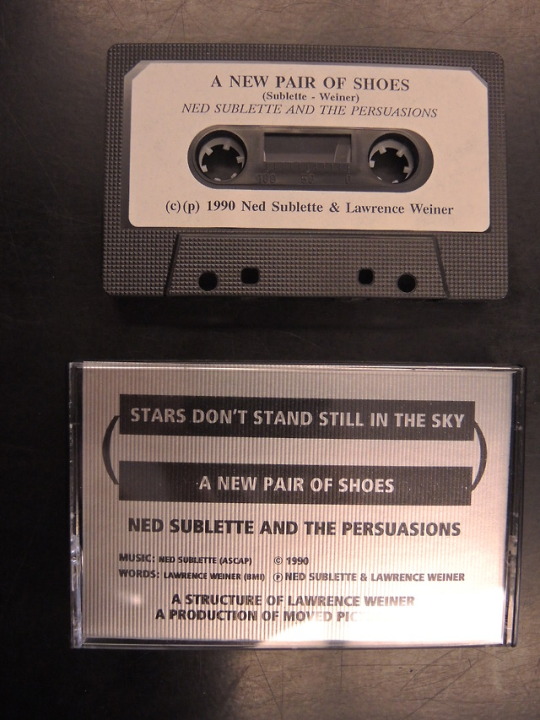
Artists’ Book Display Case for the week of January 28th:
Surface: A Bookwork by the Artists who Participated in the Surface Residency October-December 1999, Banff, Canada (Banff, AB: The Banff Centre, 1999).
Sebastian Black & Robin Cameron, " " (New York: Bodega Press, 2013).
Nam June Paik, Symphonie Nr. 5.
Carl Andre, Eleven Poems (Torino: Sperone Editore, 1974).
Lawrence Weiner, Stars Don't Stand Still in the Sky (New York: Moved Pictures, 1990).
#artists book#artists books#artist book#casette art#casette artist book#libraries#books and libraries#library displays#displays#art display#The Banff Centre#Banff Centre#Alberta#Canada#musical notation#Surface Residency#Art residency#Sebastian Black#Robin Cameron#Nam June Paik#Carl Andre#lawrence weiner
17 notes
·
View notes
Text
Event | Doctor’s Hours for Visual, Multidisciplinary, and New Media Artists
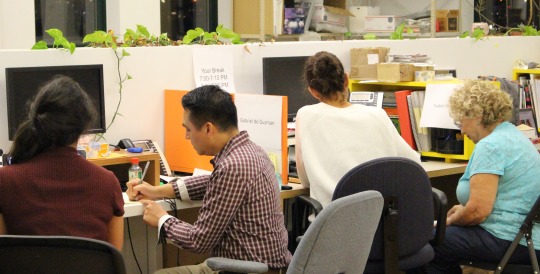
This Monday, November 4 event will offer one-on-one consultations with industry professionals.
Are you a visual or multidisciplinary artist in need of some career advice? The New York Foundation for the Arts (NYFA) is pleased to announce an upcoming session of Doctor’s Hours for Visual, Multidisciplinary, and New Media Artists, a program designed to provide artists with practical and professional advice from arts consultants. Artists who work in Drawing, Painting, Printmaking, Sculpture, Video, Film, Photography, New Media, Multidisciplinary, Performance Art, Socially-Engaged Practices, Folk, and Traditional Art are encouraged to participate.
Starting Monday, October 14 at 11:00 AM, you can register for 20-minute, one-on-one appointments with up to three arts professionals to ask questions and receive actionable tips for advancing your arts career.
Title: Doctor’s Hours for Visual, Multidisciplinary, and New Media Artists
Program Date and Time: Monday, November 4, 2019, 6:00 PM - 9:00 PM
Location: The New York Foundation for the Arts, 20 Jay Street, Suite 740, Brooklyn NY, 11201
Cost: $38 per 20-minute appointment; three appointments limit per artist
Register: Please click here to register.
To make the most of your “Doctor’s Hours” appointment, read our Tips & FAQs. For questions, email [email protected].
Can’t join us in November? You can book a one-on-one remote consultation session via Doctor’s Hours On Call. Review the bios of Sarah Hart Corpron, Michelle Levy, and Maria Villafranca, and check their availability in October to schedule your appointment.
Consultants
Alaina Claire Feldman, Director and Curator, Mishkin Gallery at the City University of New York (CUNY) Baruch College
Feldman recently organized the exhibitions The Aesthetics of Learning, Lise Soskolne: The Work, and Minerva Cuevas: Disidencia as Director and Curator of the Mishkin Gallery at CUNY’s Baruch College. From 2011-2018, she was Director of Exhibitions at Independent Curators International (ICI) and curated the traveling exhibition The Ocean After Nature as well as edited the subsequent catalogue. She was the Managing Editor of ICI’s Sourcebook Series and produced artist-centric publications. Her projects have included long-term support of artists, collectives, archives, and educational opportunities, particularly those beyond the traditional Western cannon. Feldman was previously an editor at the French arts journal May Revue. As a writer, her work has been published in Afterall, Flash Art, The Graduate Center Latinx Studies Guide, and in catalogues and anthologies for museums around the world. Feldman has lectured and taught at the University of Porto, The School of Visual Arts, NYU, Center for Feminist Pedagogy, and with ICI’s Curatorial Intensive. She was the 2017 Annual Beckwith Lecturer at The School of the Museum of Fine Arts Tufts, Boston. She is a member of the International Advisory Board of Casa S. Roque – Centro de Arte (CSR), Portugal.
Rachel Gugelberger, Curator, Residency Unlimited
Gugelberger is a cultural producer with a focus on place-based practices around social, cultural, and civic issues. Projects include (after)care, a site-specific exhibition in a former emergency waiting room at Kings County Hospital in East Flatbush, Brooklyn (2019); the inaugural Southeast Queens Biennial (2018); Jameco Exchange, a site-responsive exhibition and socially-engaged education platform in a vacant storefront in Jamaica, Queens (2016); and Hold These Truths (2017) and Bring in the Reality (2015), exhibitions that presented works at the intersection of activism and storytelling at the Nathan Cummings Foundation in Manhattan. Gugelberger is the co-founder of “1@111,” a series of process-oriented discussions that focus on a single work, curatorial premise, or proposition. Independent curatorial projects have focused on the intersection of information, data, and art, including: Once Upon a Time There was the End, the Center for Book Arts, New York, NY; Data Deluge, Ballroom Marfa, TX; and Library Science, Artspace, New Haven, CT. She is the former curator at No Longer Empty (NLE), a non-profit organization that curates site-responsive and community-centered exhibitions, education, and programs in unique spaces, and also served as director of the NLE Curatorial Lab program. Gugelberger has served as co-director of Sara Meltzer Gallery and curator at Exit Art in New York, where she curated the organization’s final exhibitions Every Exit Is an Entrance: 30 Years of Exit Art and Collective/Performative (co-curator). Gugelberger holds an M.A. degree in Curatorial Studies in Contemporary Art and Culture from the Center for Curatorial Studies at Bard College, NY.
Peter Gynd, Director, Lesley Heller Gallery
Gynd is an independent curator, fifth generation artist, and the director at Lesley Heller Gallery in Manhattan’s Lower East Side. Originally from Vancouver, Canada, Gynd studied at the Alberta College of Art and Design and has exhibited in both Canada and the U.S. Notable exhibitions curated by Gynd include a permanent exhibition at the Foundation Center, NY; an acclaimed two-person presentation at SPRING/BREAK Art Show (2015); and group exhibitions at Present Company, NY; NARS Foundation, NY; the Northside Festival, NY; Lesley Heller Workspace, NY; and at the Dynamo Arts Association, Vancouver Canada. Gynd’s exhibitions have been featured in Hyperallergic, The Carnegie Reporter, Blouin Artinfo, and Gothamist. Gynd has been a guest visitor at Residencies Unlimited, Kunstraum, and ChaNorth Artist Residency, and a guest juror at 440 Gallery and Sweet Lorraine Gallery.
Sally Eaves Hughes, Curatorial Assistant, Dia Art Foundation
Hughes is a curator specializing in contemporary art across the Americas. As the Curatorial Assistant at Dia Art Foundation, she has assisted on exhibitions of work by Dan Flavin, Sam Gilliam, Renata Lucas, Dorothea Rockburne, and Andy Warhol, as well as the Artists on Artists Lecture Series. Previously, Hughes held positions at numerous institutions in New York, Boston, and Chicago, including David Zwirner, The Whitney Museum of American Art, MIT’s art department, and the Museum of Contemporary Art Chicago. Hughes holds an M.A. degree in Modern and Contemporary Art: Critical and Curatorial Studies (MODA) from Columbia University.
Eileen Jeng Lynch, Curator, Wave Hill
As Curator of Visual Arts at Wave Hill, Jeng Lynch organizes the Sunroom Project Space for emerging artists, co-curates exhibitions in Glyndor Gallery, and is involved in all aspects of visual arts programming, including publications and the annual Winter Workspace program. Current and recent exhibitions at Wave Hill include Figuring the Floral, Emily Oliveira: Mundo Irrealis (Wish You Were Here), Duy Hoàng: Interarboreal, Bahar Behbahani: All water has a perfect memory., and Ngoc Minh Ngo: Wave Hill Florilegium. Jeng Lynch is also the founder of Neumeraki, which collaborates with artists, organizations, and galleries on curatorial, consulting, writing, and editing projects. Independent curatorial projects include exhibitions at The Yard: City Hall Park, Trestle Gallery, LMAKbooks+design, Sperone Westwater, Lesley Heller Workspace, Dorsky Gallery Curatorial Programs, Garis & Hahn, and Radiator Gallery. In 2017, Jeng Lynch initiated the ongoing grassroots, multi-state advocacy initiative “Give Voice” Postcard Project. She has contributed to Two Coats of Paint and On-Verge. Previously, Jeng Lynch worked at RxArt, Sperone Westwater, and the Art Institute of Chicago in the Department of Contemporary Art. She earned a M.A. degree in Arts Administration and Policy from the School of the Art Institute of Chicago and a B.A. degree in Art History and Advertising from Syracuse University.
Matthew Lyons, Curator, The Kitchen
Lyons has organized numerous exhibitions, performances, and other programs at The Kitchen since 2005. Recent work includes projects with Moriah Evans, Chitra Ganesh, Trajal Harrell, nora chipaumire, Xaviera Simmons, Sarah Michelson, Aki Sasamoto, Constance DeJong, Kembra Pfahler, and Katherine Hubbard. Upcoming work includes projects with Lauren Bakst and Ka Baird. He’s worked on group exhibitions The Rehearsal, The View from a Volcano: The Kitchen’s Soho Years 1971-1985, One Minute More, Just Kick It Till It Breaks (catalog), Between Thought and Sound: Graphic Notation in Contemporary Music (catalog), and The Future As Disruption, also at The Kitchen. In addition to his work at The Kitchen, Lyons has worked on group exhibitions Dance Dance Revolution at Columbia University, Character Generator at Eleven Rivington Gallery, and Two Moon July at Paula Cooper Gallery. He has contributed catalog essays on the work of Mika Tajima and Vlatka Horvat, and other writing has appeared in Document Journal, Flash Art, PERFORMA 07: Everywhere and All at Once, and Work the Room: A Handbook of Performance Strategies. He is Contributing Editor at Movement Research Performance Journal, having edited the “Six Sides, Typologically Distinct: Black Box / White Cube” series, which he initiated, between 2009-2015.
William Stover, Independent Curator
Stover has been a curator of contemporary art for over 18 years and has held positions in a number of important and diverse institutions including the Carnegie Museum of Art, New Museum of Contemporary Art, Independent Curators International (ICI), and the Museum of Fine Arts, Boston. Stover is one of the founding directors and co-curator for the non-profit arts organization Re-Sited, New York, which is dedicated to re-evaluating the psychology of the “exhibition site” – its particularities, materiality, and direct relationship to the work of art.
Tamas Veszi, Founder, RadiatorArts
Veszi was born in Budapest in 1972 and from a very early age became familiar with contemporary art, painting, video art, performance, and conceptual thinking. He left Hungary at 17, finished his high school education in Israel, and was later accepted to the art school “Instituto Per L’Arte E IL Restauro” in Florence. He lived and worked in Paris before returning to Israel to work as a jeweler and jewelry designer. In 1996, Veszi applied for a Green Card and moved to New York. In 1998, he and several other residents of 70 Commercial Street in Greenpoint, Brooklyn, formed the “Greenpoint Riverfront Artists" group. They generated several performances, rooftop independent film screenings, and the annual “Open Studio Tour.” He received his B.F.A. degree from Pratt Institute in 2000, and received his M.F.A. degree in 2006 from Brooklyn College, where he studied under Elisabeth Murray and Vito Acconci. He has his first solo show at Allannederpelt Gallery in 2010, and has since participated in several exhibitions in New York and internationally. In 2016, Veszi participated in the EFA Shift Residency program, which provides peer support and studio space for artists who work in arts organizations. He is currently working on a solo exhibition in Hungary and a two person show in New York City, and continues to live and work in Greenpoint, Brooklyn.
This program is presented by NYFA Learning. Sign up here to receive our bi-weekly newsletter for the latest updates and news about programs and opportunities for artists.
Image: Doctor’s Hours, September 2019, Photo Credit: NYFA Learning
#doctor's hours#doctorshours#events#artist professional development#artistprofessionaldevelopment#nyfa learning#nyfalearning#announcements#instagram#visual artists#visualartists#multidisciplinary artists#multidisciplinaryartists#new media artists#newmediaartists
0 notes
Photo
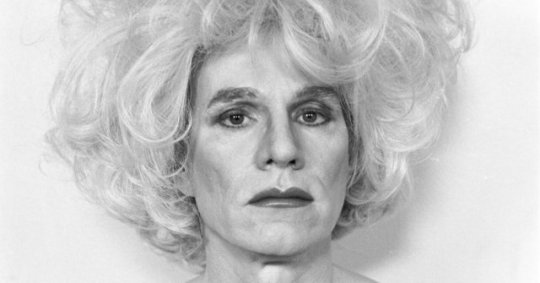
New Post has been published on https://toldnews.com/lifestyle/things-editors-like-t-suggests-cameos-by-cindy-sherman-warhols-portraits-of-women-and-more/
Things Editors Like: T Suggests: Cameos by Cindy Sherman, Warhol’s Portraits of Women and More

Lina Bo Bardi’s Most Beloved Pieces Come to New York
The multidisciplinary Italian-Brazilian artist Lina Bo Bardi is best known as an architect, most famously of the 1968 São Paulo Museum of Art (MASP), a rectangular glass box suspended from two red concrete beams like a kind of Brutalist crab. But she also made radical Modernist furniture. In 1948, not long after she moved to São Paulo from her native Italy, where she had collaborated with architects including Gio Ponti and Carlo Pagani, she founded a furniture studio, Estúdio de Arte e Arquitetura Palma, with fellow Italian architect Giancarlo Palanti. Independently, she continued to create innovative seating and display units for the buildings she designed; in keeping with her communist principles, she liked to shape each aspect of her buildings to encourage accessibility and, in her words, to “fight against the formulaic and routine.”
Among her most influential pieces are the foldable jacaranda-wood chairs she produced for the auditorium at MASP, each of which features an elegant pale leather seat and back that lace up like corsets. One such chair is now on view at a new exhibition, “Lina Bo Bardi & Giancarlo Palanti: Studio d’Arte Palma,” of rare Bo Bardi furniture at Gladstone 64 gallery in New York. Also on display are a swooping iron-and-leather deck chair she created for Casa Valéria Cirell, the rustic shingle-walled home she built for a professor and his family in a tropical suburb of São Paulo in 1964, a mahogany Zig-Zag armchair with a fuzzy animal-hide seat by Estúdio de Arte e Arquitetura Palma and a compact movable wooden chair she designed for the Espírito Santo do Cerrado Church in southeastern Brazil.
Complementing the furniture are works by Bo Bardi’s contemporaries in the Brazilian artists’ collective Grupo Frente, including Lygia Clark and Alfredo Volpi. For Simone Battisti, a partner at Gladstone, the exhibition is all the more exciting because of its setting; the gallery occupies the former home of another Modernist architect, Edward Durell Stone, who in 1956 replaced the facade of the classic Upper East Side brownstone with a geometric concrete grid. His neighbors at the time weren’t pleased, which I imagine Bo Bardi would have enjoyed. On view through June 15 at Gladstone 64, 130 East 64th Street, New York, gladstone64.com — ALICE NEWELL-HANSON
Photographers Take on a New Medium: Cameo
According to the Egyptologist and philologist E.A. Wallis Budge, the word “cameo” derives from the Cabalist word Kame’a, meaning “magical square.” Magic certainly comes to mind when viewing the enchanting new cameos created by the photographers Cindy Sherman and Catherine Opie, who worked with the New York-based collector Liz Swig on a new limited-edition series called “Cameo.” The project consists of nine jewelry pieces — four by Sherman and five by Opie — that will be shown at the Venice Biennale this May and will be available for sale online. The latest project from LizWorks, a platform founded in 2014 by Swig to foster creative collaboration, “Cameo” began after Swig saw Opie’s 2017 exhibition “Portraits and Landscapes” at London’s Thomas Dane Gallery, which included a series of portraits with dark oval backdrops. The photographs reminded Swig of one of the oldest forms of portraiture: the carved cameo. “I was like, ‘Wait a minute!’ Swig says. “Nobody has explored the cameo, maybe ever, in contemporary dialogue and life.”
Soon after, Swig reached out to Opie and Sherman about carving their photographs into curved shells to create unique cameos. For Opie, the project with LizWorks gave her the opportunity to put the art form, which dates back to ancient Greece, in a new context. “When I make a photograph, there’s only five of them out in the world, and I love that there’s this reiteration, or reinterpretation, of a photograph that is not on a gallery or museum or collector’s wall but that it’s out in the world being worn,” she says. Sherman’s cameos transport the most contemporary form of portraiture from the digital into the tangible. She tells T in an email that she had “been looking for alternative ways to transform some of my images from Instagram, since they’re not suitable for regular photographic reproduction. And I like the idea of jewelry as art.”
The cameos were carved by the artisan Gino de Luca, whom Swig met at a jewelry fair in Vicenza, Italy. De Luca is a descendant of a long line of cameo-makers based in Torre del Greco, a town outside of Naples where cameos have been made for centuries. “Cameo” was de Luca’s first encounter with the works of Sherman and Opie, and a chance to modernize his family’s craft. “Within a minute, he just got it,” Swig says of speaking to De Luca about her vision. “He is a magic force, but on this earth.” Price on request, lizworks.net — HILARY REID
A Show on Andy Warhol’s Favorite Subject: Women
In the wake of the Whitney’s landmark Andy Warhol retrospective, “From A to B and Back Again” — the first show of its kind at a U.S. museum in 30 years — New York’s galleries are taking a turn celebrating the artist in their own ways. Sperone Westwater is exhibiting a collection of the artist’s early drawings of people and still lifes of food, handbags and stilettos while, at its upstate satellite in Kinderhook, Jack Shainman will soon open a show of the collaborative paintings Warhol did with Jean-Michel Basquiat. Up at Lévy Gorvy is “Warhol Women,” which, along with some of Warhol’s best-known portraits (Jackie, Marilyn), includes those of Gertrude Stein, Golda Meir and the artist’s mother, Julia Warhola. “It’s such an obvious subject,” says the writer Alison Gingeras, who will contribute an essay to the show’s catalog, of Warhol’s relationship to and reliance on women, “and yet it’s never been fully unpacked in all its complexity.”
That complexity is perhaps most apparent in four images near the gallery’s entrance that a casual observer might dismiss, unwisely, as outliers: These photos, taken over two days in 1981 by Christopher Makos, are of the artist himself in coifed wigs and full makeup. In one, Warhol has been rendered almost unrecognizable, with teased-up Stevie Nicks hair, drawn-on eyebrows and a flirty pose incorporating clasped hands. In another, he channels his most famous subject with an asymmetrical blond wig, a bent knee and arms crossed modestly over his crotch. Though rather than a billowing dress, he wears slim jeans, a white button-up and a plaid tie, as if, below the neck, he’s still Andy. Warhol was deeply fascinated by New York’s drag culture. As far back as the 1950s, he attended clandestine drag salons hosted by the photographer Otto Fenn and made drawings (some of them part of the Sperone Westwater show) based on Fenn’s images. Still, Makos has said that’s not quite what these pictures are about. As Gingeras puts it, “They’re more about undoing gender than performing drag,” adding, “Warhol had an expansive definition of what a woman is.” “Warhol Women,” through June 15 at Lévy Gorvy, 909 Madison Avenue, New York, levygorvy.com — MERRELL HAMBLETON
From Bobbi Jene Smith, a Dance Work Like a Mountain
Since leaving Tel Aviv, where she was a principal with Batsheva Dance Company, in 2014, the Iowa-born Bobbi Jene Smith has been busy choreographing or appearing in one work after another. “With Care,” an elegiac follow-up to her solo “A Study on Effort,” debuted in the fall, and “Deo,” a dramatic staging of the myth of Demeter and Persephone, which Smith cocreated with Maxine Doyle for the Martha Graham Dance Company, premiered last month. But even as she embodies Graham’s definition of the artist as someone who just keeps marching, Smith isn’t much interested in straight, continuous lines. “It’s creation and destruction. You build up and then have to come down, or go down to come up,” she says of her process. Indeed, the symbol of the mountain has become something of a touchstone for her, one that’s directly informed her newest piece, “Lost Mountain,” which will open in New York at La MaMa the weekend of May 16.
In this case, the mountain is not just a metaphor for the artistic struggle but also for the search for meaning in life. To Smith’s mind, one way that meaning can be found is through moments of human connection. “I like the idea of people bumping into each other and, much like the tectonic forces that make the mountain itself, rising up to make something larger,” she says. She will perform the piece with an ensemble of 10 that includes the dancer-choreographer Marta Miller (“I’m pulling her out of retirement for this”); Or Schraiber, Smith’s husband; the violinist Keir GoGwilt; and the Israeli singer-songwriter Asaf Avidan. When we speak, Smith is hesitant to give away too many details but shares that the evening-length work consists of a series of cinematic vignettes, that all of the music will be live and that there will be little separation between art forms. Fittingly, the group is rehearsing at a farmhouse-turned-artist-retreat on a mountain in southern Vermont. Have there been any inspirational hikes, one wonders? “Hopefully next week. It’s been pretty cold,” says Smith. “And we have a lot of work to do.” “Lost Mountain” will open as part of La MaMa’s Moves! Dance Festival on May 16, at the Ellen Stewart Theatre, 66 East Fourth Street, New York, lamama.org — KATE GUADAGNINO
Michelle Pfeiffer’s Intoxicating New Scents
The last person I’d expect to create a collection of slightly hallucinogenic abstract contemporary art might be Michelle Pfeiffer. But the perfumes from her new collection, Henry Rose, range from the delightfully disorienting (like a Jeff Koons balloon dog) to the unsettling, like a Spielbergian poltergeist-filled TV screen.
Last Light, one of the five scents, is somehow at once lovely and hopelessly unreachable. Jake’s House is a fresh eau de cologne but smells like it was made in 2042, and so is simultaneously familiar and alarming. Fog is a work of conceptual realism — a shadowy curtain of scent that silently curls around you. (The catch, of course, is that fog has no smell. That makes it an olfactory illusion, an extraordinary trick and a mesmerizing perfume.)
Dark Is Night smells like you’re in a nightclub — you know, nightclub air at 2 a.m.: the scent of aluminum, electricity and perfume with a hint of dark plums drenched in sugared rum. You’re lost; having this many weird olfactory landmarks means you have none. The parts fly at you, fill you up till suddenly. You can’t pass a mental breathalyzer. henryrose.com — CHANDLER BURR
#lifestyle disease news#lifestyle news english#lifestyle news indian express#lifestyle news shows#lifestyle news.com#pembury lifestyle group news
0 notes
Text
“Voglio un movimento sapienziale-politico capace di formare governatori illuminati”: dialogo con Angelo Tonelli su poesia e salvezza
L’ultimo dei sapienti ha il volto di Mangiafuoco, il corpo onnipossente di un corsaro che folleggia, scaturito dalle pagine più esotiche di Salgari. Tutto comincia da un sogno, quarant’anni fa. Giorgio Colli, il maestro assoluto conosciuto a Pisa, fa toc toc, dai regni dell’oltremondo, nel cranio di Angelo Tonelli. “Mi indicava un libro nella biblioteca di Filologia greca di Pisa. Il giorno dopo andai. Presi il volume, lo aprii a caso”. Zosimo di Panopoli. Tonelli ha 25 anni. Comincia a lavorare. Dieci anni dopo, nel 1988, esce per Coliseum l’edizione di Zosimo, che è ancora oggi – ristampata da Bur – quella fondamentale. Quello è il principio di un lavoro immane dentro i testi antichi, che passa dagli Oracoli caldaici a Empedocle, fino alla traduzione, sulle tracce di Colli, dentro Le parole dei Sapienti (il volume su Senofane, Parmenide, Zenone e Melisso è uscito per Feltrinelli nel 2010), con una assunzione di metodo estetico ed etico: “I Sapienti greci non erano uomini di scrivania, come forse amerebbero dipingerli a propria immagine e somiglianza gli esangui ermeneuti contemporanei, bensì individui che intraprendevano un cammino di continua ricerca di sé stessi”. Tra le traduzioni e gli studi fondamentali di questo anomalo e rigoroso vagabondo del sapere, va citata l’edizione di Eraclito. Dell’Origine (Feltrinelli, 1993), in cui il pensiero del grande ‘Oscuro’ viene messo in relazione con “lo Chuag-Tzu, uno dei testi del Taoismo cinese” e in genere con la sapienza orientale. E poi il lavoro, fondamentale, sempre per Feltrinelli, su Eleusis e Orfismo (2015) e la traduzione della Terra desolata e dei Quattro quartetti di Thomas S. Eliot (1995), rivelando le fonti mistiche del grande poeta, che ha “la capacità, propria del rapsodo, di cucire i canti attraverso la stesura di un ordito occulto, che agglutina l’infinita variabilità semantica del testo intorno ad alcuni motivi fondamentali (il Re Pescatore, morte e rinascita, l’acqua e l’aridità ecc.)”. D’altra parte, Tonelli, il sapiente di Tellaro, sperone roccioso sul Golfo dei Poeti, presso Lerici, è anche il poeta totale della parola totalizzante, autore di ‘azioni’ estreme (tra cui, nel febbraio scorso, davanti a Montecitorio, il “Rituale esorcistico e propiziatorio per la rigenerazione etica e spirituale della classe politica”), il saggista incendiato dall’indignazione che ha pubblicato (un mese fa, per Armando Editore), La degenerazione della politica e la democrazia smarrita. Una nuova etica per la sopravvivenza della civiltà. Sfrenato, inafferrabile Tonelli, l’ultimo dei sapienti. A lui dobbiamo un’opera impareggiabile, la traduzione e il commento di Tutte le tragedie di Eschilo, Sofocle ed Euripide: dopo aver pubblicato i tre tragici in libri singoli per Marsilio, ora sono radunati, insieme, testo greco a fronte, nella collana de ‘Il pensiero Occidentale’ Bompiani, un monumento. Nel corpo di Tonelli, rarità, la parola antica ha risonanza profetica e futura, il lavorio filologico non serve a fini accademici, ma esistenziali. Per questo, dopo una certa ricerca, ritrovato Tonelli, l’ho inchiodato nel gorgo di qualche domanda. (d.b.)
Intanto. Ricordami i tuoi legami con Giorgio Colli. Per il ‘tuo’ Eraclito parti dalle sue intuizioni, mi pare, ampliandole…
Incontrai Colli quando frequentavo l’Università di Pisa, credo nel 1976. Era il Colli più essoterico, quello che aveva appena pubblicato La nascita della filosofia, e stava pubblicando La Sapienza greca. La prima impressione fu di avere incontrato il diavolo. Modi aristocratici, voce un po’ nasale con accento torinese: effetto distanza e arcano. In piena marea marxista e strutturalista introduceva il misticismo, Eleusi, Apollo e Dioniso. Una bestemmia che anticipava i tempi e l’apertura alle esperienze sapienziali e mistiche. Dopo la lezione noi allievi più stretti lo accompagnavamo alla stazione, ci offriva da bere, intrecciava un rapporto diretto e consentiva un confronto serrato. Lui voleva salvare la ragione purché connessa con il misticismo, io ero più interessato alla dimensione mistico-intuitiva. Nel corso della sua ultima lezione invitò a praticare la filologia come azione editoriale e quindi politica. Dopo che ebbe attraversato lo specchio lo sognai che mi indicava un libro nella biblioteca di Filologia greca di Pisa. Il giorno dopo andai. Presi il volume, lo aprii a caso: Zosimo di Panopoli, sull’acqua divina. Iniziai così il mio primo libro, che terminai 10 anni dopo. Per Eraclito mi attenni ovviamente alla visione complessiva della Sapienza greca propugnata da Colli, ma me ne differenziai per una assai più marcata e costitutiva contestualizzazione anche a Oriente (in primis il taoismo) della sua sapienza, in totale controtendenza rispetto a quasi tutta la letteratura intorno al Sapiente di Efeso. Gli studiosi di filosofia antica amano rimanere ancora alle Termopili a combattere i fantasmi dell’Oriente, come quei soldati giapponesi che sono rimasti nella giungla armati fino ai denti anche 50 anni dopo la fine della guerra.
Hai tradotto tutti i tragici greci, un monumento. Che idea di civiltà, che senso della parola, della poesia, traluce, lì? Perché ti sei gettato in quella impresa e cosa hai scoperto?
La tragedia è una forma suprema di esperienza sapienziale per chi la guardi, e molti potevano guardarla così, con occhi da iniziato. Il théatron è un frammento di pianeta costruito come luogo di contemplazione (theáomai) di eventi e intrecci di vita, impersonati dagli attori, da una postazione insieme di empatia e distacco. Si pensi alla meravigliosa folgorazione sapienziale, páthei máthos, patendo conoscere, enunciata dal Coro nella Parabasis dell’ Agamennone eschileo. Inoltre la tragedia è luogo di catarsi dei pathémata, come ci dice l’Aristotele della Poetica: come nella più raffinata psicoanalisi, o nelle pratiche di integrazione dei demoni del chöd tibetano, o della taranta mediterranea, o di danze rituali del Marocco e altre simili, si tratta di riconoscere le affezioni perturbanti, accoglierle nella coscienza e non restarne inflazionati. Come la Sapienza – forgiata a Eleusi o in esperienze iniziatiche più o meno collettive – di Eraclito, Parmenide, Empedocle, Pitagora, Platone, anche la tragedia greca, consacrata a Dioniso, dio dei Misteri, dell’ebbrezza (la trance) e della contemplazione (lo specchio) induce uno stato di coscienza specifico, a chi abbia occhi per guardarla: trascendimento dell’Io ordinario e senso di appartenenza al cosmo e alla pólis; esplorazione delle ombre (Edipo) e solidificazione di una postazione interiore di risveglio e consapevolezza; acquisizione della capacità di gestire le emozioni perturbanti. In questo consiste la funzione educatrice della tragedia-sapienza. La parola poetica si inarca in direzione della vita, Apollo è Dioniso, e viceversa, la musica e la danza trascinano il linguaggio oltre i propri cerebrali confini, lo sguardo degli astanti sigilla le immagini in un circuito sacro. Alla fine resta nuovamente il silenzio della pietra, sguardo senza soggetto, oggetti vuoti. Dioniso e Ades sono lo stesso dio.
Tra l’altro, hai tradotto le lamine orfiche… e Thomas S. Eliot. Che legame c’è, intenso, sotteso, evidente, tra l’orfismo e la poesia del Novecento. Cos’è la poesia ‘orfica’? Nella domanda è implicita una riflessione da parte tua nel vortice della tua personale ricerca lirica.
Thomas S. Eliot prima di rinnegarsi e diventare il poeta ufficiale della “Sassonia” anglicana aderì, come Yeats e Pound e HD alle esperienze iniziatiche ispirate dalla Blavatsky, e dichiarò di avere rasentato in gioventù l’adesione al buddismo. The Waste Land è percorso iniziatico individuale e collettivo costruito intorno al mito del Graal, e lungi da essere il poema della crisi è un tragitto dalla sterilità della psiche collettiva contemporanea alla sua rigenerazione alla luce del buddismo (Il sermone del fuoco), dell’induismo (il mantra finale datta dayadhvam damyata/shantih shantih shantih) e del cristianesimo mistico di san Giovanni della Croce. I Four Quartets sono poesia orfica già nel loro titolo e nella scansione della loro struttura che uniscono saldamente parola poetica e musica. Personalmente mi definisco ritomodernista e orfico, perché credo fortemente nella forza sapienziale e catartica della poesia, che lungi dal ridursi a esercizio letterario o ibrida e patetica míxis di cerebralismo e emotività spesso candita in un’orbita metropolitana di ruminazioni egotiche (vedi Cucchi e Magrelli, per non fare nomi) può essere levatrice di stati di coscienza unitaria e cosmica, nonché di un percorso di katábasis-anábasis sicuramente salvifico per l’ánthropos e la pólis contemporanei.
Che senso ha la parola poetica, oggi? Intendo: cosa leggi? Cosa ti interessa scrivere? Cosa stai studiando?
Adesso mi interessa finire l’ultima parte del mio lavoro sui Greci: dopo i Misteri Eleusini, Eraclito, Parmenide, Senofane, Melisso, Zenone, Empedocle, Eschilo, Sofocle, Euripide, l’alchimista Zosimo e gli Oracoli caldaici vorrei finire un libro su Pitagora e lo sciamanesimo greco a cui sto lavorando. Alla poesia di questi tempi preferisco la saggistica, e ho in corso di pubblicazione un volume dal titolo nondualistico Attraverso-oltre: della conoscenza, della solidarietà, dell’azione, che riprende il filo della tradizione sapienziale d’Oriente e occidente dove lo avevo lasciato una decina di anni fa con Sulle tracce della sapienza. In poesia, sto lavorando da una decina d’anni a una raccolta Canti del fiume più vasto, ma credo che se deciderò di stamparla lascerò una ventina di pagine bianche a testimoniare la dimensione kenotica del mio approdo interiore, assai vicino al misticismo apofatico e allo zen, non senza l’amore tutto ellenico per il mondo visibile, tripudio di ologrammi meravigliosi.
Da sempre, la tua poesia è un ‘gesto’: estetico, etico, politico. Che rapporto c’è, a tuo avviso, o deve esserci, tra arte e politica? Ti interessa questa politica, quella di oggi? Da che parte stai (oltre che dalla tua)?
L’arte vera e profonda, la sapienza vera e profonda sono la più concreta azione politica possibile perché alla maniera di quel che dicevano Platone e Aristotele e ben sapevano i Pitagorici (ma anche Cristo e Buddha), la vera politiké téchne è l’arte di creare interiorità illuminate e dunque cittadini illuminati, gli unici capaci di assumere la direzione della pólis con la giusta responsabilità e capacità di non lasciarsi dominare dai demoni dell’ignoranza, dell’avidità e della prevaricazione, e esercitare il potere in maniera consapevole e solidale. A tutto ciò ho dedicato un libro, appena uscito, dal titolo La degenerazione della politica e la democrazia smarrita: una nuova etica per la sopravvivenza della civiltà, e innumerevoli peformances, tra cui, recentissima, Eutopia, con i colleghi del movimento Poetry and Discovery: davanti a Montecitorio abbiamo recitato testi nostri e di varie tradizioni e culture per invitare i politici a una formazione spirituale che consenta loro di essere degni di governare con consapevolezza e spirito di servizio. Io ho officiato un Rituale esorcistico e propiziatorio per la rigenerazione etica e spirituale della classe politica. In questa prospettiva, mi colloco fuori da qualunque ideologia, di destra, sinistra e centro, e auspico la formazione di un movimento sapienziale-politico che stimoli la formazione di politici illuminati e dotati di una eticità sorretta da pratiche spirituali tra cui la meditazione di presenza, la capacità di integrare le tendenze negative per non esserne schiavi, una grande apertura del cuore per poter essere a fianco dei più deboli. Per dirla con Eraclito: “Se non speri l’insperabile non lo scoprirai perché è chiuso alla ricerca e a esso non conduce nessuna strada”.
L'articolo “Voglio un movimento sapienziale-politico capace di formare governatori illuminati”: dialogo con Angelo Tonelli su poesia e salvezza proviene da Pangea.
from pangea.news https://ift.tt/2n4hZaF
0 notes
Text
Bau ‘e mendula
L'area archeologica è situata sulle estreme propaggini collinari del Monte Arci. Il Baumendula è un nuraghe di tipo complesso, costituito da una torre centrale e da quattro torri aggiunte e raccordate con uno schema planimetrico piuttosto irregolare. E’ databile al 1400-1000 a.C.
È costruito con blocchi di trachite. Allo stato attuale, la situazione di crollo non consente di leggere pienamente le diverse strutture dell'edificio. Il monumento (m 26 sull'asse nord-sud x m 23 su quello ovest-est) mantiene ben conservate e visibili la torre centrale decentrata sul fronte occidentale (con un diametro d di circa 10 m. su cui si articola una scala elicoidale) ed una delle quattro torri del corpo aggiunto che si congiunge con tratti murari di forma e percorso discontinui, delimitati al centro dall’ampio cortile. ; sono inoltre individuabili diversi tratti delle cortine ad andamento retto-curvilineo e concavo-convesso del bastione, e le celle di altre due torri minori, svettate e ricolme di macerie. Le murature sono realizzate con filari irregolari di blocchi di notevoli dimensioni appena sbozzati. La torre centrale – che residua per un'altezza di m 10 - aveva probabilmente l'ingresso sul lato orientale. Sullo svettamento è possibile individuare i resti del paramento interno della cella superiore e quelli della scala a chiusura angolare: quest'ultima, proveniente dal piano inferiore, introduceva nel vano attraverso un ingresso aperto sul lato occidentale e ora ostruito dal crollo. Le murature del mastio sono costruite con blocchi poliedri
La torre B svetta in elevato a livello della torre centrale A. Si conserva la camera a tholos, di forma pseudo circolare e diametro interno di circa 4 metri, collegata con il cortile orientale per mezzo di un corridoio coperto a piattabanda, inserito nella cortina muraria tra le torri. Le aperture consistono in un doppio ordine di feritoie, quattro in basso e tre nelle parti alte del paramento murario. Lungo il settore orientale, oltre il mastio ed il presumibile antemurale, si sono poste in luce murature ad andamento curvilineo pertinenti a due vani di un insediamento abitativo. L’indagine archeologica del monumento, avviata da Vincenzo Santoni negli anni Novanta del secolo scorso, non è stata purtroppo proseguita.
Intorno al nuraghe si estendeva un ampio abitato del quale sono state evidenziate alcune capanne circolari nuragiche ed edifici quadrangolari, pertinenti ad una fase di riuso dell'abitato in epoca romana e medievale.
L’ubicazione su uno sperone al piede del Monte Arci fa pensare ad una funzione di controllo del territorio circostante.
La tecnica muraria presenta massi subpoliedrici di trachite basaltica disposti in parte secondo un ordito quasi regolare, in parte secondo una intelaiatura discontinua, a causa dell’utilizzo di blocchi di maggiore formato messi in opera con pochissime zeppe di rincalzo. Analoga soluzione tecnica si evidenzia in altri tratti delle cortine murarie.
ci disposti su filari regolari soprattutto nei paramenti superiori.
Fonte: Mont 'e Prama e i Monumenti Nuragici dell'Oristanese - Delfino Editore - Autori: Emerenziana Usai/Raimondo Zucca
http://www.intourcity.it/oristano/223/detail.html
complesso di Bau Mendula villaurbana - Villaurbana
http://www.gooristano.com/nuraghe-bau-mendula
http://wikimapia.org/3308853/it/Complesso-nuragico-di-Bau-Mendula-Villaurbana
La lettera alfa (in greco α) è una vocale ancipite (può essere sia breve sia lunga), aspra, di timbro medio. Nel sistema numerico dei Greci di età ellenistica, era il segno usato per il numero 1. Era accompagnata da dieresi per la decina di migliaia (10 000). Nei papiri si può trovare il numero anche con una lineetta orizzontale al di sopra della lettera.
Il nome di questa lettera deriva dalla parola aleph, che nell'alfabeto consonantico fenicio era il nome del simbolo che rappresentava foneticamente il colpo di glottide. La forma della lettera maiuscola A deriva infatti dalla rappresentazione stilizzata di una testa di bue, con una rotazione di 180º. Essa a sua volta derivava probabilmente dall'antica scrittura egizia, dove appunto questa lettera era rappresentata dall'immagine di una testa di bue.
L’Aleph, un punto nascosto in cantina dove si trovano “tutti i luoghi della terra, visti da tutti gli angoli”. L’Aleph non è solo una lettera, dietro questo concetto si scherma l’intero infinito della creazione: ciò che è stato, ciò che è, ciò che sarà, ciò che potrebbe essere e ciò che potrebbe essere stato.
Aleph
ʾĀlp is the first letter of many Semitic alphabets, including Phoenician Aleph , Syriac ‘Ālap ܐ, Hebrew Aleph א, and Arabic Alif ا.
The Phoenician letter gave rise to the Greek Alpha (Α), being re-interpreted to express not the glottal consonant but the accompanying vowel, and hence the Latin A and Cyrillic А.
In phonetics, aleph /ˈɑːlɛf/ originally represented the glottal stop [ʔ].
Origin
The name aleph is derived from the West Semitic word for “ox”, and the shape of the letter derives from a Proto-Sinaitic glyph based on a hieroglyph which depicts an ox’s head. In Modern Standard Arabic, the word أليف /ʔaliːf/ literally means 'tamed’ or 'familiar’, 'to be acquainted with; to be on intimate terms with’. In modern Hebrew, the same root |ʔ-l-f| (alef-lamed-peh) gives me’ulaf, meaning 'trained’ (when referring to pets) or 'tamed’ (when referring to wild animals).
In geometria, aleph represents the number 1, and when used at the beginning of Hebrew years, it means 1000 (i.e. א'תשנ"ד in numbers would be the date 1754). In the Sefer Yetzirah, the letter aleph is king over breath, formed air in the universe, temperate in the year, and the chest in the soul. Aleph is also the first letter of the Hebrew word emet (אֶמֶת), which means truth. In Jewish mythology it was the letter aleph that was carved into the head of the golem which ultimately gave it life.
Aleph also begins the three words that make up God’s mystical name in Exodus, I Am who I Am (in Hebrew, Ehyeh Asher Ehyeh אהיה אשר אהיה), and aleph is an important part of mystical amulets and formulas.
Aleph in Jewish mysticism represents the oneness of God. Jewish mysticism relates aleph to the element of air, the Fool of the major arcana of the tarot deck.
Hebrew sayings with aleph: “From aleph to tav” describes something from beginning to end, the Hebrew equivalent of the English “From A to Z.” “One who doesn’t know how to make an aleph” is someone who is illiterate.
“No…with a big aleph!” means 'Absolutely not!’.
Numeral
As a numeral, Alaph/Olaf stands for the number one. With a dot below, it is the number 1,000; with a line above it, Alaph/Olaf will represent 1,000,000. With a line below it is 10,000 and with two dots below it is 10,000,000.
In origine la sua forma assomigliava a una testa di bue stilizzata (aleph significava infatti "bue"), l'א deriva dal glifo egizio
. In seguito ad una rotazione della lettera, connessa col variare del senso della scrittura, le due "corna" del bue sono diventate le due "gambe" della A stampatello.
0 notes
Text
Dug Up at Dogster: Don’t Miss These September 2017 Dog Events
Finally! The weather is turning a little bit cooler and your dog can join you outside without getting heatstroke. Take advantage of the better temperatures to take your dog on an excursion. Or, looking for inside fun? September is full of dog exhibits in great museums. Try out these fun September 2017 dog events:
Friday, September 1 — Sunday, September 24: Canine Impressions: Dog Show Scenes II
Artist Terry D. Chacon; courtesy AKC Museum of the Dog.
Don’t miss artist Terry d. Chacon’s Canine Impressions: Dog Show Scenes II exhibit at the AKC’s Museum of the Dog. Painting dog show scenes since 2004, the artist has also bred top-winning Afghan Hounds for more than 40 years, and they’ve inspired both her paintings and sculptures.
Tuesday, September 5 — Monday, January 8, 2018: On the Prowl: Cats and Dogs in French Prints
Artist Maurice-Charles-Louis Taquoy: ‘Two Pointers,’ 1907; Etching, collection Zimmerli Art Museum at Rutgers. Gift of Mr. and Mrs. Herbert Littman. Photography by Peter Jacobs.
Looking for some canine culture? Don’t miss the On the Prowl: Cats and Dogs in French Prints exhibit beginning today at the Zimmerli Art Museum. This distinguished university-based museum is at Rutgers University in New Brunswick, New Jersey. Also showing: the companion exhibit Cats vs Dogs: Illustrations for Children’s Literature. Visit zimmerlimuseum.rutgers.edu for more information.
Tuesday, September 5 — Saturday, October 28: Exhibit Based on Being Human
In October, Chronicle Books is coming out with its new book, William Wegman: Being Human, which showcases more than 300 of Wegman’s dog photos spanning five decades of work. View these photos at an exhibit based on the book at the Sperone Westwater gallery in New York. Details at speronewestwater.com.
Tuesday, September 19: Bigsby’s Folly Craft Winery & Restaurant
Bigsby’s Folly Craft Winery & Restaurant is hosting a Yappy Hour, with 10 percent of the proceeds going to the Morris Animal Foundation, which funds studies around the world to improve the health and well-being of animals. Join the fun — there will be goodie bags from Chuck & Don’s Pet Supply, drink specials and giveaways from Tito’s Vodka, pet information booths, games, prizes and more! Plus, they’ll be raffling off a basket full of items from Kong. It all takes place at Denver, Colorado’s Bigsby’s Folly Craft Winery & Restaurant located at 3563 Wazee Street in the Art District. To get to the winery on the RTD Light Rail, take the A-Train to Blake Street Station and the pedestrian bridge over the tracks to Wazee Street.
Thumbnail: Photography by Shutterstock.
Stay tuned for more from Executive Editor Melissa Kauffman on Dogster.com’s Dug Up at Dogster column and on social media with #DogUpatDogster.
The post Dug Up at Dogster: Don’t Miss These September 2017 Dog Events appeared first on Dogster.
from Dogster http://ift.tt/2vLIljE
via http://www.dogster.com
0 notes
Text

Giovanni Anselmo, (1971), Leggere, (offset lithograph on paper), Editarte / Sperone Editore, Torino, 1972 [Rosemary Furtak Collection, Walker Art Center, Minneapolis, MN. © Giovanni Anselmo]

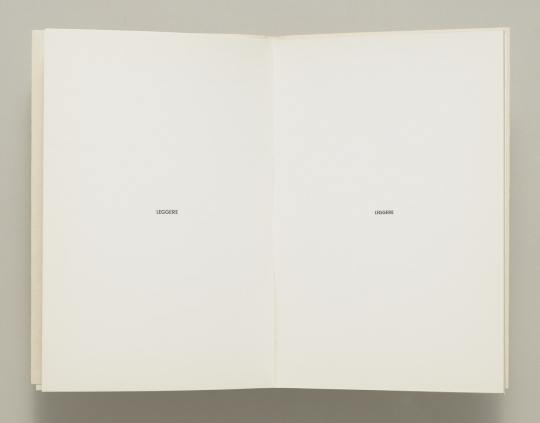
#graphic design#typography#art#visual writing#book#cover#book cover#giovanni anselmo#rosemary furtak collection#walker art center#editarte#sperone editore#1970s
10 notes
·
View notes
Link
I have a favorite drinking game with some very simple rules. It can be played with any alcoholic beverage, and there’s no score keeping, or turn taking. At its best, it’s a game played rather loose and fast, with a large party of inebriated and irreverent participants. Essentially, it’s a toasting game: you raise your glass and propose a toast, and, as long as the toast meets the requirements of the game, everyone clinks glasses and takes a drink. The rules are so simple, in fact, that you get drunk very fast.
The rules are this: you toast to dead white men. Any dead white man will do—he doesn’t necessarily need to be heroic or worthy of saluting—just as long as he’s dead, white, and male.
The beauty of the game is that you never run out of dead white men.
You start with politicians maybe, work through musicians, composers, authors, movie stars, comedians, explorers, photographers, painters, popes and presidents, kings and dictators and despots, and on and on and on. As the game continues someone will inevitably lose track and slip, raising a glass to someone who’s not dead yet, or someone who’s not white or is not a man. The trick is not to drink when someone inevitably yells out “Jimi Hendrix!” Those inevitable interludes, however, make the game fun, and add a small challenge to the gameplay, which otherwise will proceed at an alarming rate.
People often protest the playing of Dead White Men, finding it offensive. “Let’s toast to all women,” someone might insist. Indeed, you wouldn’t necessarily “run out” of prominent women or people of color to drink to. There are many famous women throughout history. There are many great and worthy people of color through the ages. But that is not the point. Dead White Men is not a righteous game, but it is instructive in its insidiousness. While there is arguably no lack of deceased, non-male, non-white persons out there to whom you could raise a glass, a drinking game in their honor would be an inaptly sobering exercise rather than a flippant boozefest. Dead White Men works so well as a drinking game because it can be played without really thinking, on an unconscious level.
History, at least Western history, is littered with the corpses of dead white men. Art history is likewise dominated by them—their paintings and sculptures and cathedrals and manifestos and infighting and denunciations and revelations, their strokes of genius and their cultural plagiarisms. This is not to say that their contributions are irrelevant or should be dismissed. The thinking, writing, making, and movements of European men have undeniably shaped Western history, art, and culture. Dead white men have produced the conditions of the world in which we live today. Like it or not, this is our canon.
But what if it was different? What if the rules of the game were flipped?
In the early 1970s, Mary Beth Edelson took a reproduction of DaVinci’s Last Supper and replaced the head of Jesus with the visage of Georgia O’Keeffe, and his disciples with the faces of other women artists—Louise Bourgeois, Helen Frankenthaler, Nancy Graves, Elaine de Kooning, Lynda Benglis, Lila Katzen, Lee Krasner, Louise Nevelson, Yoko Ono, M. C. Richards, Alma Thomas, and June Wayne. Around the border of the collage, she affixed the portraits of 70 other women artists—“every photograph of a woman artist that I could find.”1 Eighty-two. That is how many Edelson could find in 1971. She titled the work Some Living American Women Artists / Last Supper. It’s an iconic work of feminist art, one that has been widely reproduced, disseminated, discussed, censured, and celebrated.
In 2007, artist and writer Micol Hebron encountered Edelson’s collage for the first time in person, and looked at it for a very long time. The piece struck a very personal chord: “It was the first work of art that had ever moved me to tears. And my tears were because of the overwhelming emotion that I felt when I thought about the proposition that this work was making, which was, for me: Imagine if you saw yourself—and not a man—in all of the places where men appear in (art) history. Imagine, then, what the world would be like for you.”2
It’s a simple proposition with powerful implications. What if all the faces on Mount Rushmore looked like people like you? What if you saw yourself throughout the canon of history? What if you didn’t have to discover people like you to look to as role models and you could simply look to any number of the great majority of thinkers, leaders, philosophers, artists? What does that underlying knowledge of precedence do to your innate feeling of self worth and potential? How psychologically empowering that would be in an unconscious, unquestioning, assumed way. (For our white male readers, I’d ask you to imagine what it would be like to flip the script the opposite way. What if you grew up in a world where everyone in power did not look like you? How might that subconsciously change your perspective, your grasp on the possible or impossible, your goals and ambitions?)
“I became overwhelmed thinking about how empowered, capable, respected, supported and optimistic I would feel,” Hebron continues. “Having seen thousands of images of men in art history—men as artists, authors, collectors, writers, etc. —I realized that if I had seen women instead, my sense of what I was capable of, and of what opportunities there would be for me in the world would be RADICALLY different. And that made me cry. And then, it made me want to work to ensure that women of the future HAVE such a history to look back upon. And that’s what drives my work now.”
Certainly there are other factors at work with regards to an individual’s predispositions and aptitudes for ambition, confidence, leadership, success. Not to mention concrete socioeconomic factors that affect access, including class, education, family or personal security, physical ability, etc. But there’s no doubt that your perception of yourself, your accomplishments and your perceived likeliness to succeed is affected by whom you see represented as your peers, the successful people at the top of your field, and the leaders of the past. To put it bluntly: it takes a lot more gumption, persistence, will, and maybe even a measure of sheer delusion to even enter a field that is dominated by people who are not like you. And once you’ve entered that field and made it your prerogative to succeed within it, you still have to contend with the viewpoints and expectations of the other people and institutions within it, who may find it easier to accept and promote the people they usually do, than to try and reevaluate their preconceptions. It’s a constant struggle. And it’s a struggle that those who are blessed with the privilege of already being part of the dominant sex/race will never even need to consider.
In 2013, Hebron initiated the Gallery Tally project, which invites artists to expose gender inequity in the art world through statistics gathering and poster design. The project thrust the issue of gender discrimination back in the spotlight, following in the tradition of the Guerrilla Girls, the “conscience of the art world,” whose humorous graphic representations of inequality have been the bane and the shame of the keepers of the patriarchy since 1984.
But who remain the keepers of the patriarchy? Hardly anyone in the art world, or, really, anywhere else, would readily and openly identify as such in this day and age (Georg Baselitz may be one of the only exceptions). And yet inequality still persists, as curator Maura Reilly recently pointed out, “despite decades of postcolonial, feminist, anti-racist, and queer activism and theorizing, the majority continues to be defined as white, Euro-American, heterosexual, privileged, and, above all, male. Sexism is still so insidiously woven into the institutional fabric, language, and logic of the mainstream art world that it often goes undetected.”3 This logic is most pronounced in the secondary art market and institutional collections, but extends throughout the art world. In an interview that appeared in this magazine’s online edition, artist, educator, and the co-editor of the issue you’re reading now Jaclyn Wright diplomatically offered her thoughts regarding the controversial Selektor Magazine “100 Photographers on Tumblr” blog post (which featured only 8 women4 ). “Many times I’ve heard/read artists say things like, ‘it doesn’t have to do with male or female, I just prefer this over that,’” she writes. “Of course, everyone is entitled to his or her own preferences but if you are only looking at male artists then you should consider looking at some female artists. It’s advantageous to have a more diverse group of individuals in your repertoire,” she suggests.5 In response to the controversy generated by the blog post, Selektor apologized and explained that the list’s bias toward male artists was not intentional. In comparison, the roster of New York gallery Sperone Westwater—who represents the likes of Richard Long, Bruce Nauman, and William Wegman—also only includes 8% women6 (and only two of its 35 artists are non-white), and that discrepancy is, in all likelihood, also not intentional.
I doubt that most gatekeepers of art and culture—including many women art professionals—set out to consciously favor the works of white men. There are a great many far-reaching systemic factors and conditions at play when it comes to who gets shown, who gets written about, who gets opportunities, and who gets collected. But a major part of the problem, I contend, is due to a simple lack of awareness of the implicit biases and the lingering subconscious effects that are produced by a world that has been traditionally dominated by white men. The looming presence of the dead white men of the past—those hordes who have dominated the narrative of Western history—leads to a general cultural state in which, unless you have trained yourself otherwise, a white-male dominated lineup might not immediately trigger concern or suspicion. It’s because, subconsciously, it just looks normal.
Harvard University psychologist Mahzarin Banaji terms these “implicit biases”: “bits of knowledge” about social groups that get “stored in our brains because we encounter them so frequently in our cultural environments.”7 The names of famous men we learned in school, memorized, repeated, regurgitated (“Washington, Adams, Jefferson, Madison…”) establish and reinforce a connection between white men and leadership, prominence, genius, and fame. “Once lodged in our minds, hidden biases can influence our behavior toward members of particular social groups, but we remain oblivious to their influence,” Banaji writes. These unintentional biases can manifest themselves in many different ways, of which we are often completely unaware. The first step to fighting these biases is to become alert to their presence, to understand that even if we believe we don’t have them, they might in fact be lying under the murky surface of our subconscious, underpinned by generations of tradition, history, and culture that has favored certain groups over others. I’m not suggesting that we always need to insist on absolute parity, but shouldn’t we be aware of the possibility of implicit predilections? And be vigilant against unconsciously and unquestioningly giving in to them?
In the long view, for oppressed minority voices, our history is just beginning, our forebears relatively few amongst the crushing crowd of dead white men. “To make up for what’s happened so far in art history, every show should be 99% women and artists of color, but only for the next 400 years,” the Guerrilla Girls write.8 It’s good to keep that in mind when someone gets defensive when you point out bias or depressing statistics—we’ve only just turned that corner. Our Western culture, ideas, philosophy will continue to be defined by the actions and thoughts of great dead white men. Past the horizon of our most recent history, you encounter only the echoing absence of the voices of women and people of color in the tradition.9
But let’s lift a glass to our new history. Here’s to some living women artists. Here’s to all the artists of color. Here’s to the diversity of the artists within the pages of this magazine. Here’s to the strivers and the persisters. Here’s to the counters and the quota queens. Here’s to artists from other traditions and artists who invent their own traditions. Here’s to Mary Beth Edelson and Micol Hebron and the other artists who imagine what life could be like if the script were flipped. And here’s to all those old dead white men—I promise we won’t forget you.
1 Linda S. Aleci, “In a Pig’s Eye: The Offence of Some Living American Women Artists,” from The Art of Mary Beth Edelson, 2002.
2 Email communication with the author, July 9, 2015.
3 Maura Reilly, “Taking the Measure of Sexism: Facts, Figures, and Fixes”, ARTnews, May 26, 2015. http://www.artnews.com/2015/05/26/ taking-the-measure-of-sexism-facts-figures-and-fixes/
4 N.B.: This number might be 10 women, depending on names and pronouns found online. - Copy editor
5 “PS Feature: Jaclyn Wright,” Papersafe, December 21, 2014. http:// papersafezine.tumblr.com/post/105783077257/ps-feature-jaclynwright
6 Paddy Johnson, “Pussy Galore’s 2015 Gallery Report Card is Out,” ArtFCity, February 19, 2015. http://artfcity.com/2015/02/19/pussygalores-2015-gallery-report-card-is-out/
7 Mahzarin R. Banaji, Anthony G. Greenwald, Blindspot: Hidden Biases of Good People, New York: Delacorte Press, 2013, p. xii.
8 Confessions of the Guerrilla Girls, 1995. http://www.guerrillagirls. com/interview/index.shtml
9 Laura Lyn Inglis, Peter K. Steinfeld, Old Dead White Men’s Philosophy, Amherst, NY: Humanity Books, 2nd ed., 2000, p. 1.
Essay Printed in PAPERSAFE Magazine, Issue #05: Turbulent Bodies / A Cross, A Wild Sea, Edited by Jaclyn Wright & Elle Perez, September 2015
0 notes
Photo
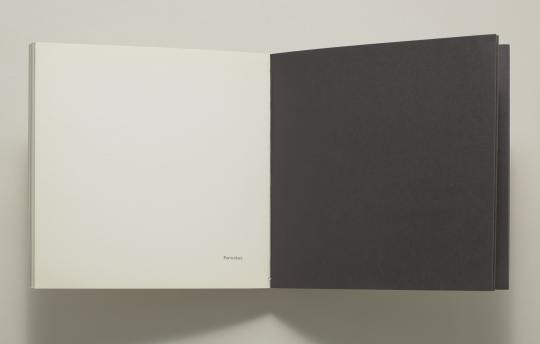
From: Giovanni Anselmo, 116 Particolari visibili e misurabili di INFINITO, Sperone Editore, Torino, 1974 [Walker Art Center, Minneapolis, MN. © Giovanni Anselmo]
#graphic design#art#geometry#pattern#structure#book#giovanni anselmo#sperone editore#walker art center#1970s
29 notes
·
View notes
Photo
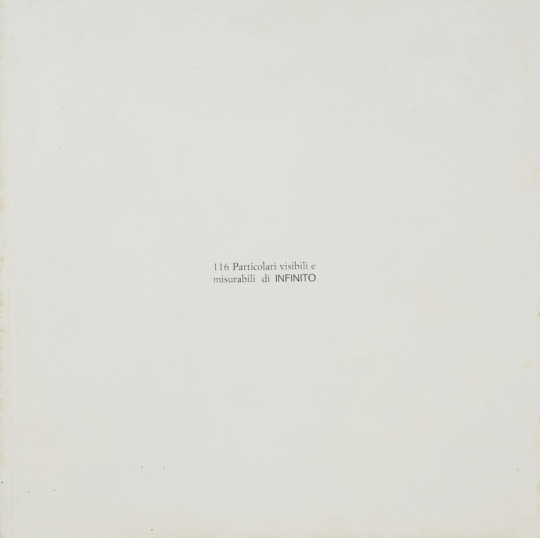


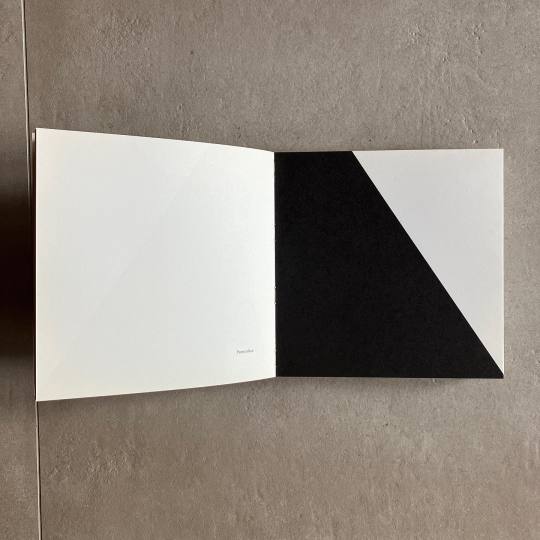
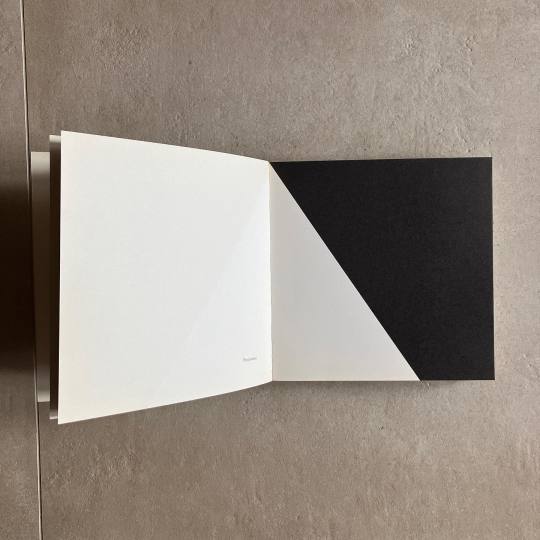
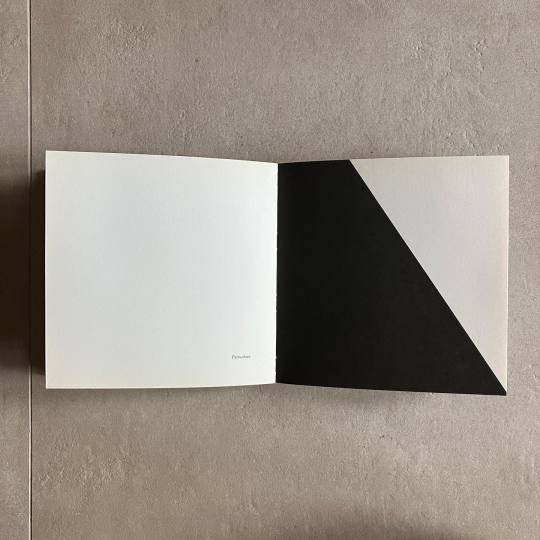

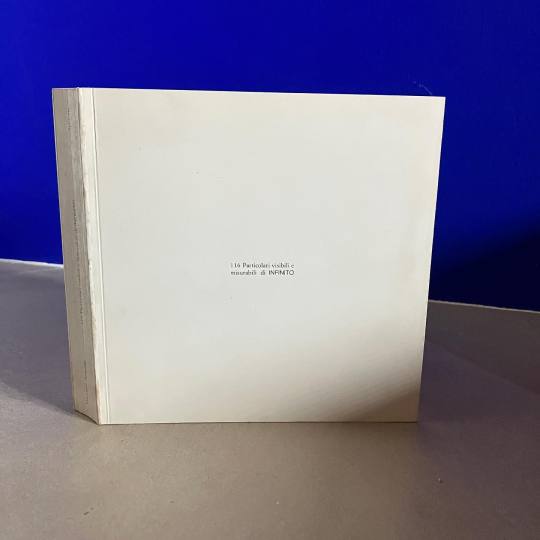

Giovanni Anselmo, 116 Particolari visibili e misurabili di INFINITO, Sperone Editore, Torino, 1974 [Studio Bruno Tonini, Gussago (BS). Walker Art Center, Minneapolis, MN. © Giovanni Anselmo]
#graphic design#art#geometry#pattern#structure#book#cover#book cover#back cover#giovanni anselmo#sperone editore#walker art center#1970s
16 notes
·
View notes
Photo

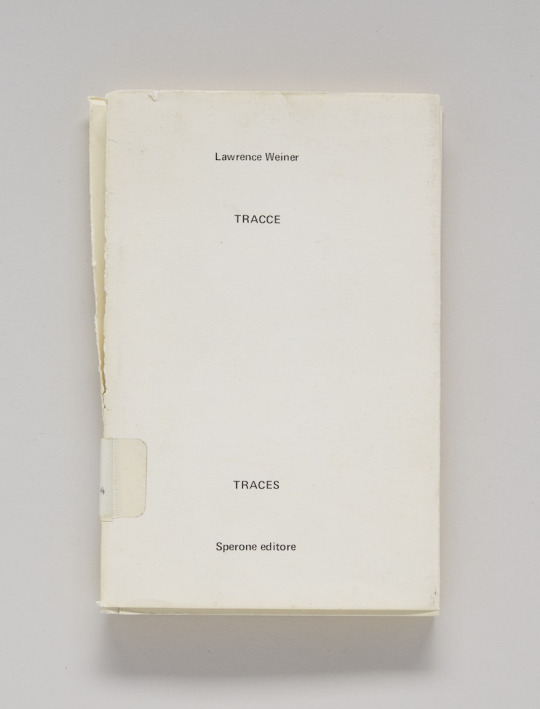

Lawrence Weiner, TRACCE / TRACES, Sperone Editore, Torino, 1970 [Walker Art Center, Minneapolis, MN. © Lawrence Weiner]
#graphic design#typography#art#book#cover#book cover#lawrence weiner#sperone editore#walker art center#1970s
13 notes
·
View notes
Photo

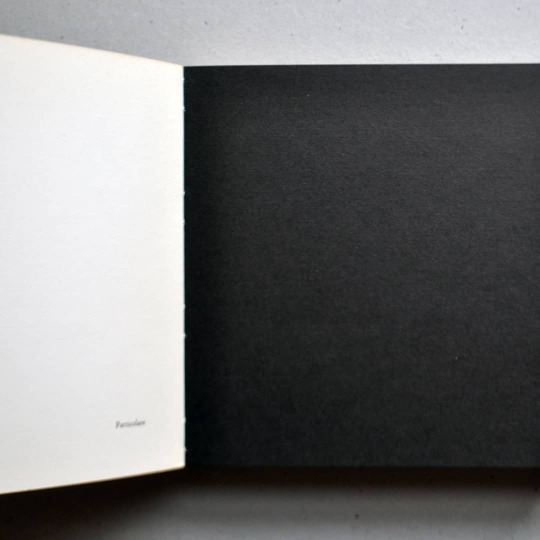

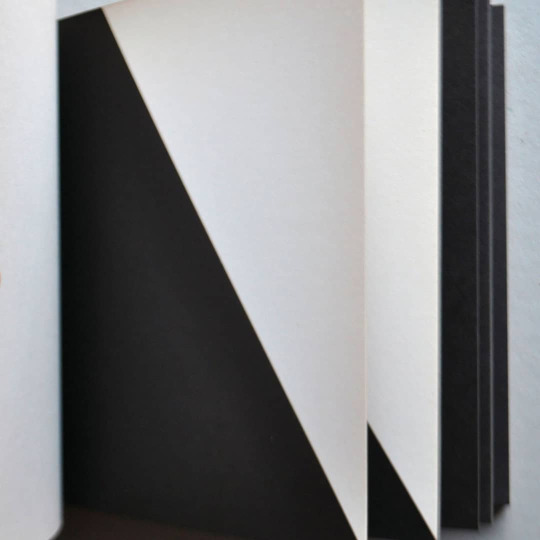
Giovanni Anselmo, 116 Particolari visibili e misurabili di INFINITO, Sperone Editore, Torino, 1974 [© Giovanni Anselmo]
(via pccc)
#graphic design#geometry#pattern#structure#book#cover#book cover#giovanni anselmo#sperone editore#1970s
28 notes
·
View notes
Photo

Lawrence Weiner, TRACCE / TRACES, Sperone Editore, Torino, 1970 [The Archive is Limited]
16 notes
·
View notes